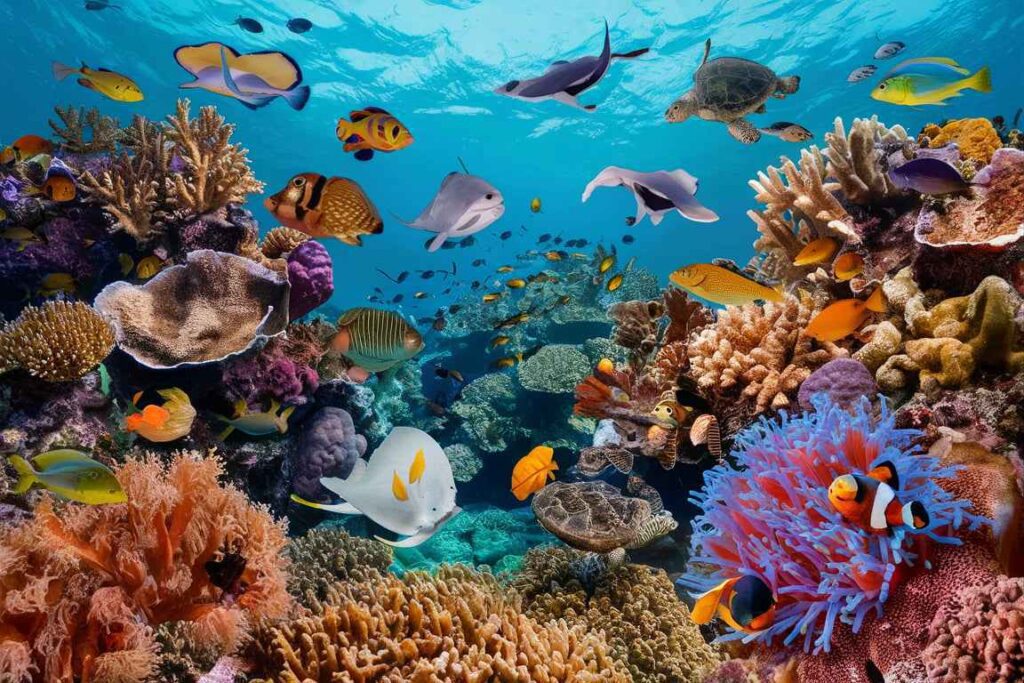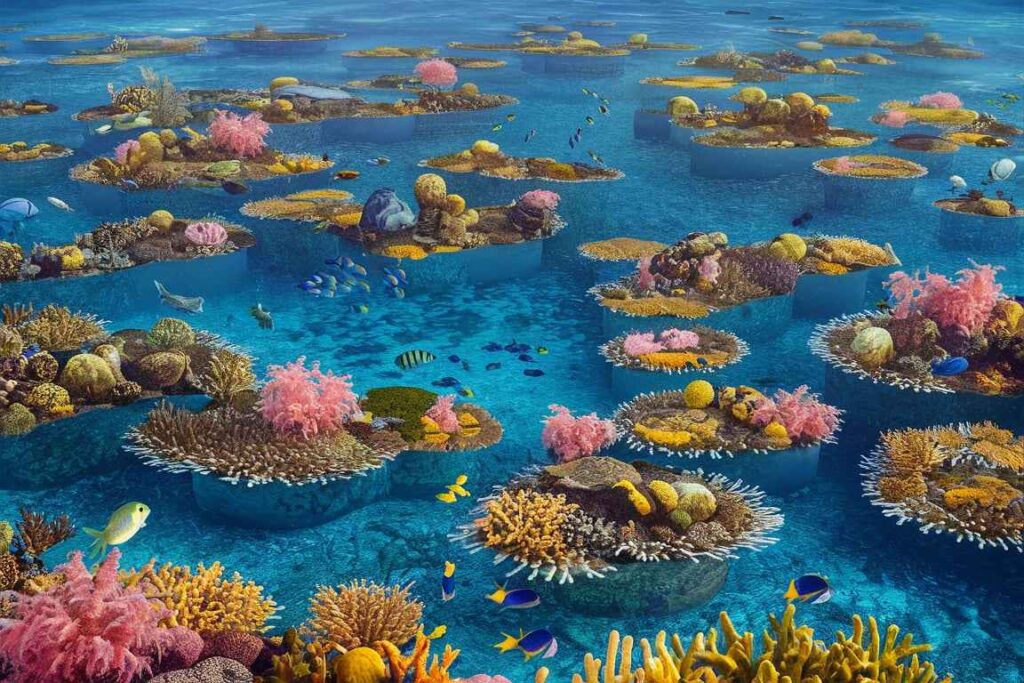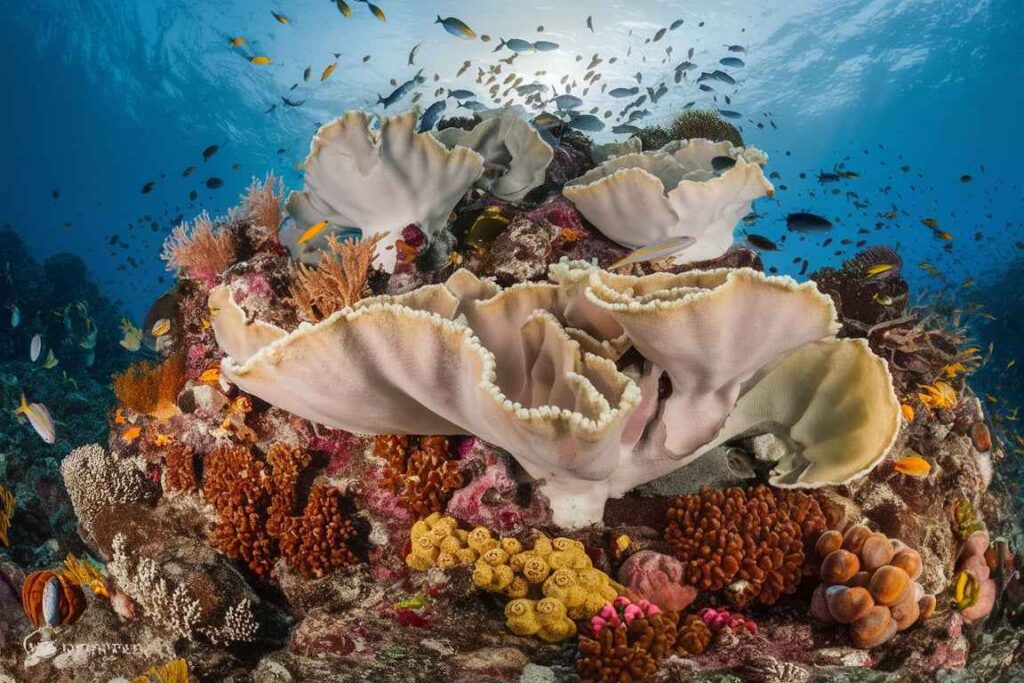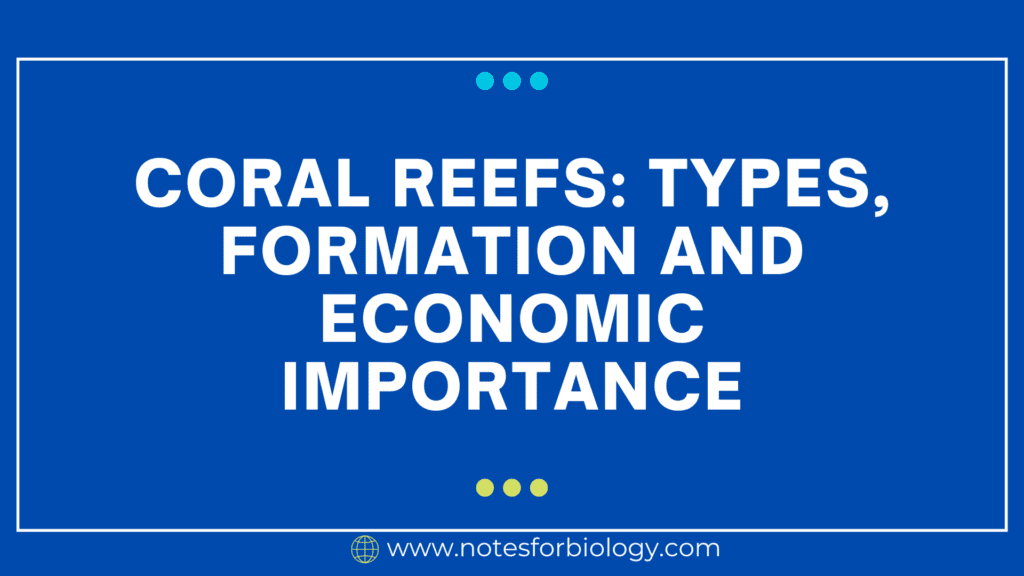Coral reefs are some of the most diverse and fragile ecosystems on Earth. They are formed by the accumulation of calcium carbonate skeletons secreted by coral polyps, tiny invertebrate animals that live in colonies. They come in various types and formations, each with its unique characteristics and ecological significance.
Table of Contents
Coral reefs
Coral reefs are diverse underwater ecosystems held together by calcium carbonate structures secreted by corals. They are often referred to as the “rainforests of the sea” due to their rich biodiversity. It reefs are some of the most diverse and fragile ecosystems on Earth. They are formed by the accumulation of calcium carbonate skeletons secreted by coral polyps, tiny invertebrate animals that live in colonies. It come in various types and formations, each with its unique characteristics and ecological significance.

Types
- Fringing Reefs: These are found close to shorelines, often forming a border around islands or along continental coasts.
- Barrier Reefs: These run parallel to coastlines but are separated by a lagoon from the mainland.
- Atolls: Atolls are circular coral reef formations that surround a central lagoon. They typically occur when fringing reefs grow on subsiding volcanic islands.
- Patch Reefs: These small, isolated reef structures can be found within lagoons or along continental shelves.

Formation

Economic Importance of Coral Reefs:
- Fisheries Support: Coral reefs provide habitat and breeding grounds for countless fish species important to local economies as food sources and recreational fishing industries.
- Tourism Revenue: Many people visit coastal regions solely for their vibrant coral reef ecosystems, generating significant tourism revenue through activities like diving and snorkeling.
- Coastal Protection: Healthy coral reefs act as natural barriers protecting coastlines from erosion caused by waves and storms; this reduces damage to infrastructure such as hotels, homes, roads, etc.
- Medicinal Potential: Numerous compounds derived from marine organisms found in coral reefs have shown promising medicinal properties for treating diseases like cancer.
Environmental Concerns:
Despite their immense value, coral reefs face several threats today due to human activities:
- Climate Change & Ocean Acidification: Rising sea temperatures lead to “coral bleaching,” where corals expel symbiotic algae causing them to turn white and eventually die if temperatures remain high for extended periods. Increased CO2 emissions also contribute to ocean acidification which inhibits calcium carbonate deposition, making it more difficult for coral polyps to build their skeletons.
- Pollution: Runoff from agricultural activities and coastal development introduces pollutants such as sediment, nutrients, and chemicals into the water, which can smother coral reefs and disrupt their delicate balance.
- Overfishing: Unsustainable fishing practices like dynamite fishing, cyanide fishing, and overfishing of herbivorous fish that keep algae growth in check can destroy coral reef ecosystems.
- Coastal Development: Construction activities along coastlines often involve dredging or filling in areas near it. This disrupts water circulation patterns and damages the physical structure of the reefs.
- Tourism Pressure: Unregulated tourism can lead to physical damage to corals through careless diving practices or anchoring on fragile reef structures. Additionally, increased pollution from tourism-related activities can negatively impact nearby it.
Efforts are being made globally to protect and conserve these valuable ecosystems. These include establishing marine protected areas (MPAs), implementing sustainable fishing practices, reducing carbon emissions through climate change mitigation strategies, promoting responsible tourism practices, and raising awareness about the importance of coral reef conservation among local communities and stakeholders.
Frequently Asked Question
What is Coral reefs ?
Coral reefs are diverse underwater ecosystems held together by calcium carbonate structures secreted by corals. They are often referred to as the “rainforests of the sea” due to their rich biodiversity.
What are the types of Coral Reefs?
The types of Coral Reefs are
1. Fringing Reefs
2. Barrier Reefs
3. Atolls
4. Patch Reefs
Related Article

